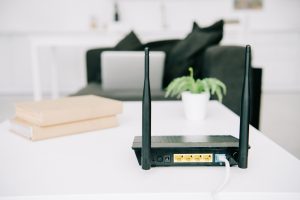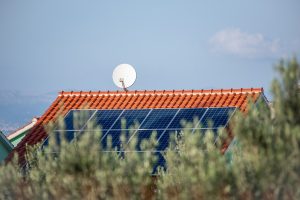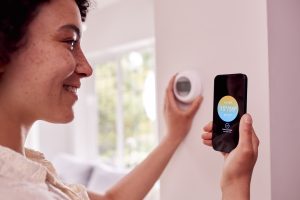As families grow and lifestyles evolve, the electrical demands on our homes increase dramatically. What seemed like adequate power provision when you first moved in can quickly become insufficient as children accumulate electronic devices, home working becomes the norm, and modern appliances multiply throughout the house. If you find yourself constantly hunting for available sockets or relying on trailing extension leads, it’s time to consider whether your home needs additional electrical outlets.
Recognising the Warning Signs
The most obvious indicator that you need more sockets is the proliferation of extension leads throughout your home. Whilst a single extension lead for occasional use poses little risk, multiple leads snaking across floors and around furniture create both safety hazards and practical inconveniences. Overloaded sockets, where multiple adapters are plugged into single outlets, represent another clear warning sign that your electrical provision is inadequate.
Children’s bedrooms often become particular problem areas as they accumulate devices requiring charging—tablets, gaming consoles, mobile phones, laptops, and various electronic toys. A typical teenager’s bedroom might need to accommodate a computer setup, television, gaming equipment, bedside lamps, and multiple charging stations, far exceeding the capacity of the standard two double sockets typically installed during construction.
Kitchen demands have similarly increased as small appliances become more common. Coffee machines, food processors, slow cookers, air fryers, and various other gadgets compete for socket space alongside traditional appliances. Meanwhile, kitchen islands and breakfast bars often lack adequate power provision despite becoming central family gathering spaces where devices need charging and laptops require power for homework or work tasks.
Understanding Modern Family Power Needs
Today’s families use significantly more electricity than previous generations, not just in quantity but in the diversity of applications. Home working has created new demands for dedicated office spaces with multiple device requirements, reliable internet connections, and proper lighting. Children’s educational needs now routinely include powered devices, from primary school tablets to teenage gaming setups and university laptop requirements.
The Internet of Things has quietly increased electrical demands throughout homes. Smart thermostats, security cameras, voice assistants, streaming devices, and wireless routers all require permanent power connections. These devices, whilst individually modest in their power consumption, collectively require numerous additional sockets that weren’t considered in older electrical installations.
Seasonal variations also affect socket requirements. Christmas decorations, garden lighting, heating fans, and air conditioning units create temporary but significant additional demands. Planning for these variations prevents the annual struggle with inadequate power provision during peak usage periods.
Safety Implications of Inadequate Socket Provision
Using extension leads and multi-socket adapters might seem like simple solutions, but they introduce significant safety risks when used inappropriately. Daisy-chaining extension leads creates fire risks through overloading, whilst trailing cables across walkways present trip hazards. Poor-quality adapters and overloaded circuits can cause overheating, potentially leading to electrical fires.
Children are particularly vulnerable to electrical hazards created by inadequate socket provision. Extension leads at floor level become climbing frames and chewing toys for toddlers, whilst trailing cables provide irresistible opportunities for dangerous play. Additional properly installed sockets eliminate these risks by providing power where it’s needed without creating hazardous temporary connections.
Overloaded circuits can cause repeated tripping of circuit breakers or, in older installations with inadequate protection, may cause dangerous overheating without obvious warning signs. Professional socket installation ensures that additional outlets are properly distributed across circuits and adequately protected.
Planning Additional Socket Installation
Effective socket planning considers both current needs and future requirements. Families continue evolving, and electrical demands typically increase over time rather than decrease. Installing additional sockets during planned renovation work proves more cost-effective than addressing inadequate provision as an isolated project later.
Different rooms have distinct requirements that influence socket positioning and quantity. Bedrooms need sockets near beds for phones and tablets, at desk areas for computers and lamps, and potentially near wardrobes for hairdryers and styling tools. Living areas require sockets near seating for device charging, behind entertainment centres for multiple devices, and in corners for lamps and occasional appliances.
Kitchen socket planning must consider both current appliances and potential future additions. Islands and peninsulas should include multiple sockets to support food preparation and casual device charging. Utility rooms often need additional provision for seasonal appliances and charging stations for garden tools and recreational equipment.
Types of Socket Solutions
Modern socket installation offers various solutions beyond traditional single and double outlets. USB integrated sockets provide convenient device charging without requiring separate adapters, particularly useful in bedrooms and family areas where phones and tablets need regular charging. These sockets typically include both traditional three-pin outlets and USB ports in single faceplates.
Floor sockets represent excellent solutions for large rooms or areas where wall sockets aren’t practical. Modern floor socket designs integrate seamlessly with various flooring types whilst providing convenient power access in central locations. They’re particularly useful in living rooms with central seating arrangements or open-plan areas where wall distances prove prohibitive.
Kitchen-specific solutions include pop-up sockets that remain flush with worktops when not required, and under-cabinet socket strips that provide multiple outlets without compromising worktop space. These specialised solutions address kitchen socket shortage without affecting the room’s aesthetic appeal.
Installation Considerations and Regulations
All additional socket installation must comply with Building Regulations Part P, ensuring work meets safety standards and receives appropriate certification. Professional installation is essential, not just for compliance but for safety—incorrectly installed sockets can create fire risks and electrical hazards that aren’t immediately obvious.
The existing electrical installation’s capacity must be assessed before adding multiple new sockets. Older consumer units may require upgrading to accommodate additional circuits safely. Similarly, existing circuits may need load assessment to ensure they can handle additional sockets without overloading.
Socket positioning must consider both practical requirements and safety regulations. Minimum heights above floors, distances from water sources, and accessibility requirements all influence installation planning. Professional electricians understand these requirements and ensure installations meet all relevant standards whilst maximising practical utility.
Cost-Effective Planning Approaches
Installing multiple sockets simultaneously proves more cost-effective than piecemeal additions over time. The disruption and access work required for electrical installation means that planning comprehensively reduces overall costs and minimises inconvenience to your family.
Combining socket installation with other electrical work, such as lighting upgrades or consumer unit replacement, further improves cost-effectiveness. Many families find that addressing electrical inadequacies holistically provides better value than addressing individual problems as they arise.
Future-proofing through slightly over-specifying socket provision typically costs little extra during installation but provides significant long-term benefits. Children grow and accumulate more devices, work patterns evolve, and technology continues creating new electrical demands.
Smart Planning for Different Life Stages
Young families face different electrical challenges compared to households with teenagers or empty nesters. Toddler-proofing requirements influence socket positioning and type selection, whilst teenage bedrooms need substantial power provision for multiple devices. University-age children often require temporary but intensive electrical provision for study periods.
Elderly family members may need additional sockets at convenient heights and locations to avoid bending or stretching to reach power outlets. Bedside sockets become increasingly important for medical devices, whilst bathroom and hallway sockets improve safety by reducing extension lead usage.
Home working requirements vary significantly depending on occupations and working patterns. Dedicated office spaces need multiple sockets for computers, printers, lighting, and communication equipment, whilst temporary home working might require flexible socket provision in various rooms.
Professional Assessment and Installation
Qualified electricians can assess your current electrical provision and recommend cost-effective solutions that address both immediate needs and future requirements. They’ll consider your family’s lifestyle, the property’s existing electrical capacity, and potential future changes to create comprehensive improvement plans.
Professional installation ensures that additional sockets integrate properly with existing electrical systems, maintain safety standards, and receive appropriate certification. This certification is important for insurance purposes and property sales, whilst professional workmanship provides peace of mind about long-term safety and reliability.
Making the Investment Decision
Additional socket installation represents excellent value when considered against the ongoing inconvenience and safety risks of inadequate provision. The cost of professional installation is typically modest compared to other home improvements, whilst the daily convenience and safety benefits affect your family’s quality of life significantly.
Most families find that adequate socket provision transforms their daily routines, eliminating the frustrations of hunting for available outlets or managing multiple extension leads. Children can charge devices safely in their bedrooms, kitchen appliances can operate without juggling socket availability, and home working becomes more efficient with dedicated power provision.
At Martin Kaine Electrical, we specialise in helping growing families upgrade their electrical provision safely and cost-effectively. Our experienced team will assess your current needs, plan for future requirements, and install additional sockets that enhance your home’s functionality whilst maintaining full compliance with safety standards. Contact us today to discuss how additional electrical outlets can improve your family’s daily life.




